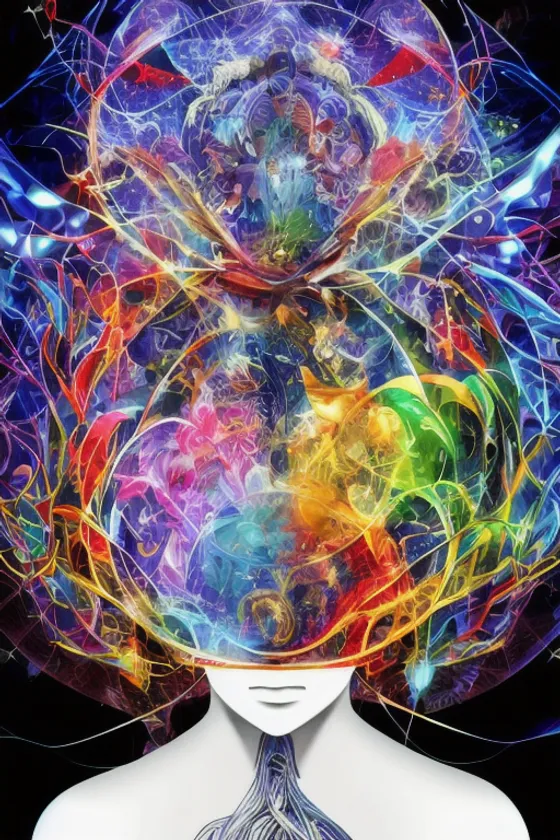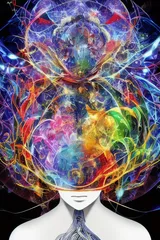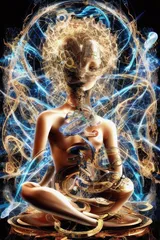Preliminary Report on the Effects of Hallucinogenic Therapy! From Ketamine Infusion to Hallucination Therapy Ketamine Hallucinotherapy Clinic to be Opened in Tokyo
名古屋麻酔科クリニック
Nagoya Anesthesia Clinic has introduced hallucinogenic therapy, an evolution of the latest ketamine infusion therapy. This new approach to working with the unconscious mind has reported groundbreaking results in the treatment of psychiatric disorders.
Ketamine clinics have attracted worldwide attention and are rapidly growing: 18 months ago, there were approximately 100 ketamine clinics in the U.S. A year and a half later, the number had grown to 300 clinics, and more recently, the number is rapidly growing to between 500 and 750 clinics.
About 10 years ago, ketamine infusion began to be used as an effective treatment for depression. Numerous studies and clinical data have shown it to be a breakthrough treatment for depression, and it has also been shown to be effective for a number of psychiatric disorders, including anxiety disorders, PTSD, obsessive-compulsive disorder, dilated ideation, and substance use disorders.

Ketamine Hallucination Therapy (1)
■First Hallucinogenic Therapy Clinic in Japan
Nagoya Anesthesiology Clinic opened 15 years ago as a department of anesthesiology, pain clinic and psychosomatic medicine, providing pain treatment and psychological approaches. 2023, we opened the Ketamine Clinic in early 2023 and have been active in the treatment of mental disorders.
More recently, the clinic has adopted the use of ketamine infusions as part of hallucinogenic therapy. Hallucinogenic therapy is a treatment method that uses LSD, MDMA, magic mushrooms, and other drugs to induce hallucinations, which are combined with psychotherapy to enhance their effectiveness. We actively utilize hallucinations and dreaming experiences, a known side effect of ketamine, as part of our treatment.
■ Differences between ketamine infusion and hallucination therapy
With ketamine infusion, hallucinations are treated as a side effect. However, in ketamine-based hallucinotherapy, hallucinations are viewed as the main effect, and adjustments are made to make them more likely to occur, and the effects are enhanced by analyzing these hallucinations. When hallucinogenic therapy is given to those who have previously received ketamine infusions, many (45 out of 50) report that it is more effective and sustained. Newly treated patients also had higher rates of efficacy and persistence (80% to 90%) than with conventional ketamine infusions.
■Unconsciousness and Social Pain
In psychiatry, hallucinations and dreams are considered to be symbols of the unconscious. The unconscious is a state of mind that has no language and is expressed through dreams, images, and music. When the unconscious and conscious are out of balance, mental illnesses such as depression and anxiety disorders occur.
At our clinic, we view the hallucinations and dreams seen during ketamine infusion as messages from the unconscious and use this experience as part of the treatment. This allows us to draw directly on the power of the unconscious mind to treat our patients.
In pain clinics, pain may be categorized as follows
1. nociceptive pain: pain caused by physical injury or physiological effects
2. neuropathic pain: pain caused by nerve damage
3. psychological pain: pain caused by psychological stress or emotional problems
4. spiritual pain: pain related to spiritual distress and meaning of life related to the end of life
5. social pain: psychological pain that is directly caused by a breakdown in social interactions and relationships.
In this classification, psychological pain, spiritual pain, and social pain, which are 3, 4, and 5, are often considered similar because they are psychogenic. Therefore, to clearly distinguish it from psychological pain, we consider social pain to be "pain that is inscribed in human nature at an unconscious level and is caused by the presence of others. Social pain is expressed as pain and suffering, but it can also be manifested as specific symptoms such as depression, anxiety, and thoughts of death.
When humans were still monkeys, there was no large social structure, but rather small groups of family members and relatives. Later, as larger groups and urbanization progressed, rules, regulations, and punishments became necessary as an organization, and I believe that this became pain and suffering for humans on an unconscious level. From a social pain perspective, it could be said that the unconscious wants us to live all the time only in small groups, like family units, as we did when we were monkeys. If you do not want such a thing, then you are thinking with a social head (consciousness). They have their merits and demerits, and a balance is important.
Spiritual pain is also considered as pain at the unconscious level, and is caused by the loss of relationships with others. (From the perspective of spiritual pain, we can say that loneliness is painful and we want to live with someone, in groups large or small, but with a bond.) These are pains and sufferings acquired in the process of evolution and social formation, and even though they are psychogenic, they are at the unconscious level (emotion and mind) as opposed to the conscious level (related to thinking and sociality). Ketamine-based hallucination therapy targets the unconscious and is considered a treatment for social and spiritual pain.
It is said that it is difficult for human beings to live well without the presence of others, but the presence of others can itself cause pain in some aspects. We believe that in today's extremely densely populated societies, the effects of social pain are more pronounced. Pain and suffering as social pain can occur when people are unable to adjust to an unfavorable environment or system. It may be an unconscious expression of pain and suffering that cannot be explained by psychological pain alone.
■Another aspect of social pain
About 10,000 years have passed since humans formed city-states, and this progress can be considered a success in some aspects. Especially since the Industrial Revolution, the development of science and technology has brought natural threats under control and built a world structure with humanity at the top. However, conflicts among people are constant and wars between countries and groups occur constantly. Even today, with great advances in science and technology and the ability to solve the once major problem of food supply, many people continue to fight for more power and hegemony. The disparity between rich and poor has become more apparent, and while a few in our overcrowded society are hopeful, many others continue to feel conflicts and see no hope in pain and suffering.
Humanity's social development is the result of our superior intelligence (consciousness), but this progress may not necessarily be what the unconscious perceives it to be. In order to clarify this point, we have believed that it is necessary to deepen our understanding of the unconscious in order to find the right direction. From this perspective, we have high hopes for hallucinatory therapy that can clarify the unconscious in order to address social pain. This therapy may bring about a change for the better, not only for individual suffering, but also for social distortion and suffering.
■ Request for your cooperation
We plan to establish a general incorporated association and open a clinic for ketamine hallucination therapy in Tokyo. We are looking for companies and organizations that share this vision and would like to sponsor us. We are also looking for doctors and clinical psychologists who are interested in ketamine hallucinotherapy and would like to be involved in the operation of the clinic. Please feel free to contact us using the contact form on our website.
We look forward to working with you.
Clinic Overview
Nagoya Anesthesiology Clinic
Location : 2-49-4, Okaue-cho, Chikusa-ku, Nagoya-shi, Aichi 464-0837, Japan
URL : https://nagoyamasui.com/
Mail : mail@nagoyamasui.com
About Ketamine Clinic
URL : https://nagoyamasui.com/ketalar
Botox for stiff neck
URL: https://nagoyamasui.com/botox
Tennis elbow PRP therapy
- Category:
- Corporate Trends





